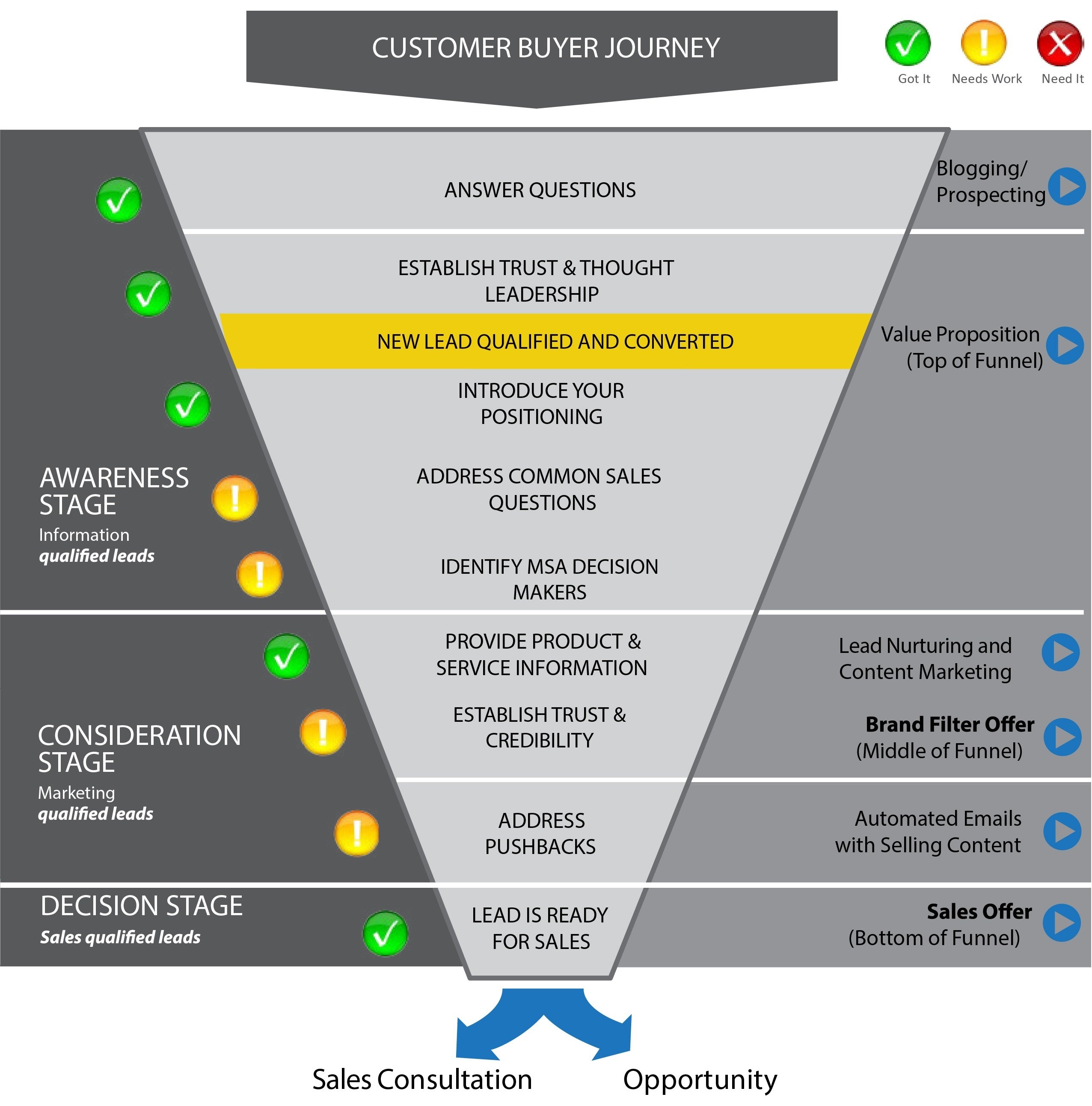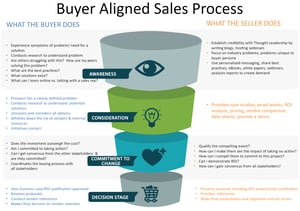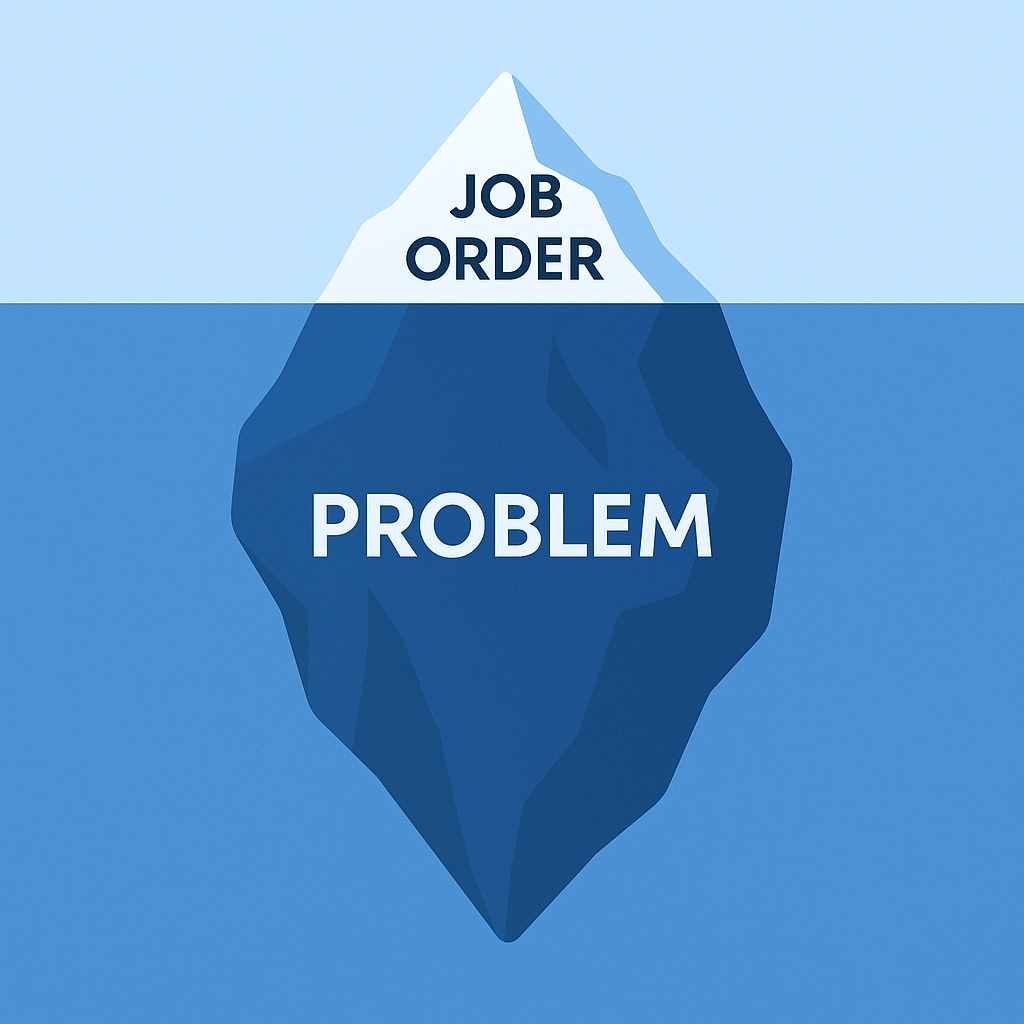Selling With Your Consultant
In my previous post, How to Prevent Unexpected Contract Terminations, I shared how systemizing consultant and client check-ins at key milestones...

In this day and age it’s unfathomable to shop without using the internet. We research and buy products, pay our bills, book vacations, register for classes, file our taxes and download music all from the internet. Just the other night I was with two buddies after  work for happy hour when one started sharing with us how he bought a new car.
work for happy hour when one started sharing with us how he bought a new car.
He shared with us how he started off by researching different makes and models on the internet. After narrowing it down to a couple of different cars he did additional online research on each specific model to gain insight on the performance and safety features of each model and to see what current owners had to say about their experience owning those cars.
From there he started looking at different dealerships-all online-to compare prices and financing options and figure out who was offering the best deals. In essence my friend had walked us through his buying journey and how he arrived at the car he purchased. Keep in mind that about 80% of this was all done on his own, before he even picked up the phone and spoke with a sales person.
This is a perfect example of how people, both consumers and corporate America buy products and services today. This is a perfect example of the buyers journey.
Perhaps you’ve read the research conducted by the CEB that shows that the average buyer is 57% of the way through his or her buying process before they ever engage a sales rep. Things were not always this way. There was a time when buyers actually needed salespeople from the start. In fact, there was a time when salespeople, not the buyer, held all the cards. When and why? Before the internet, because salespeople were the only ones who could answer the buyer’s questions like:
The internet brought the entire sales profession into a whole new era in which the sales process is now predominately driven by the buyer, not the seller. In short, the internet has turned the traditional sales funnel upside down so that the buyer-not the seller-holds all of the cards. As a result, the information that buyers need to make a purchasing decision is just a few clicks away. Despite this radical shift, many IT staffing firms continue to sell the way they’ve always sold. Sadly, many of those firms have fallen behind the times and are struggling to catch up.
To stay aligned with today’s empowered buyer, sellers must learn how and why sales reps must sell the way buyers buy.
Because today's buyer is educated, informed and ultra-empowered, IT staffing sales professionals must transform the way in which they sell. IT staffing firms need to adopt a buyer aligned sales process and adopt a customer centric sales methodology that supports the sales process. Many IT staffing firms talk about the need to transform how they sell buy very few do it. I’m going to share with you how and why I teach sales reps to sell the way buyers buy and how to tie your sales process to your customers buying journey.
Define and Map Your Buyer’s Journey 
Traditional, transactional IT staffing sales reps make their personal agenda the focal point of their sales process instead of the needs and wants of their buyers. These are the sales reps that focus on peppering the buyer “to learn more about your role and your business,” or pitching candidates, their service offerings, their candidate database, screening process, awards and accolades. Transactional salespeople focus their time and energy trying to “squeeze prospects into their process” based on what their sales manager has told to them rather than listen to and support the prospect throughout their buyer journey and purchasing process.
For example, most sales reps are told to make cold calls, schedule meetings and pitch candidates regardless of their buyer’s wants and needs and where they stand within their buyer journey or purchasing process. This self-serving approach fails to account for the buyer’s needs, creates friction between the buyer and the sales rep and ultimately makes the sales rep and customer feel out of sync. Not only that, this self-serving process delivers zero value to the buyer.
If salespeople can’t add value beyond the information found on their company’s web site (where the buyer can read it on their own) the buyer has no reason to engage sales people. Apparently there are many sales reps out there who fail to deliver value: According to Forrester Research, only 19% of the more than 400 US-based IT and Executive Buyers surveyed believe that their time spent with sales people is valuable and lives up to their expectations. To avoid this, I suggest you consider the following four steps as your basic framework for understanding your buyer’s Journey.
During the Awareness stage buyers begin to realize they’re experiencing an issue or a challenge or they identify a goal and then they decide whether or not solving the issue or pursuing the goal should be a priority. In order to fully understand your buyer’s awareness stage, ask yourself the following questions:
Once your buyer has made the decision to solve the problem or pursue the goal they enter the Consideration stage in which they have clearly defined their issue(s) or goal(s) and have committed to addressing it. During the consideration stage they assess different approaches and solution offerings to resolve their issue(s) and/or help them achieve their objectives. To best understand your buyer’s consideration stage, ask yourself:
In the Commitment Stage your buyer is deciding whether or not pursuing the goal or solving the issue is worth the investment. Additionally, they are also assessing whether or not they and others who will be impacted by the solution are committed to making the change and leaving the status quo. They have to consider whether or not they can get others stakeholders to buy in and commit to change as well begin to coordinate the purchasing process.
To best understand your buyer’s commitment stage, ask yourself:
In the Decision stage, buyers are trying to make a decision on a solution. It is here that buyers create their decision criteria and map the different vendors and their service offerings to those criteria in order to decide on the one that best meets their needs. In order to fully understand your buyer’s decision stage, ask yourself:
How and Why Sales Reps Must Sell The Way Buyers Buy
If we have learned anything about how & why customers buy including the buyer's journey, then we know that:
As today's empowered buyer progresses through the buyer journey, they expect to receive personalized and targeted information from the seller based on their specific needs and where they reside in their decision making progress. Salespeople who fail to recognize what stage of the buyer's journey their buyer resides in are unable to support their customers through their buying process and quickly get out of sync with their buyer resulting in lost opportunities.
Finally, by designing a sales process that supports your buyers journey, salespeople can easily add value to their sales conversations which makes for a memorable and valuable customer experience.
If you want to improve sales performance, download the free eBook titled "The Definitive Guide to Building a Buyer Aligned Sales Process."

In my previous post, How to Prevent Unexpected Contract Terminations, I shared how systemizing consultant and client check-ins at key milestones...

About a year ago, I was serving as the fractional revenue leader, managing sales and recruiting for a client.

If you’ve worked in staffing long enough, you’ve been trained to chase job orders.